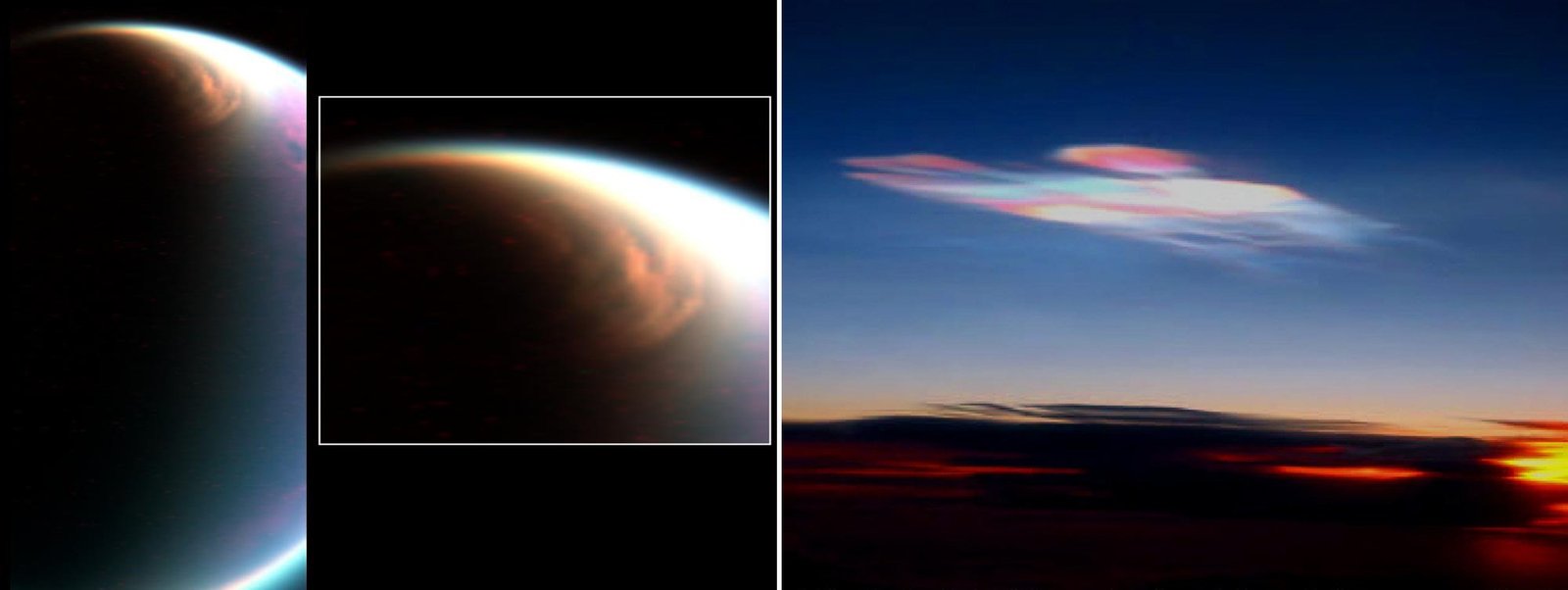WASHINGTON, D.C: NASA’s Cassini mission has captured images that show a massive cloud covering the south pole of Titan, which is the largest of the moons that orbit planet Saturn. According to NASA, the rare ice cloud covering on Titan hovers at an altitude of 300 kilometers. Because Titan’s season lasts much longer than the Earth’s, NASA’s Cassini is expected to end its mission on Saturn before the ice cloud covering Titan’s south pole goes away.
Interesting profiles are flowing through NASA’s Cassini Mission. In the latest case, the space agency has shared images of Titan that have never been captured before. The images show a covering of ice clouds engulfing the south pole of the moon at heights of about 300 kilometers above the surface.
Season Changes:
It is believed that the ice cloud buildup on the south pole of Titan signals a shift in seasons in the moon. The massive ice cloud covering the southern atmosphere of Titan is indicative of the onset of winter weather in the region. With the north pole of Titan transitioning into spring, the ice cloud covering there has seemed to disappear as it shifts south.

Initially, NASA Cassini captured the beginning of ice clouds build up on the south pole of Titan in 2012. As it turns out, the initial images of clouds forming in the south of the moon was literally the tip of the iceberg. What NASA cameras have captured in the south regarding layers of ice clouds is unprecedented.
To some extent, the clouds on Titan are like the fogs on Earth, except that they tend to be flat at the top. They are also in layers that peak at about 200 kilometers. The layering is said to stem from the fact that different gases freeze at different temperatures.
The impressive images of Titan’s ice clouds were captured by Cassini’s infrared camera called the Composite Infrared Spectrometer (CIRS).
Lengthy Seasons:
NASA’s Cassini mission to Saturn is scheduled to come to an end in 2017. But given that seasons in Titan last for as long as seven years and six months, it means that the Cassini mission will close before the ice clouds clear up in Titan’s south.NASA’s Cassini reached Saturn in 2004.


















